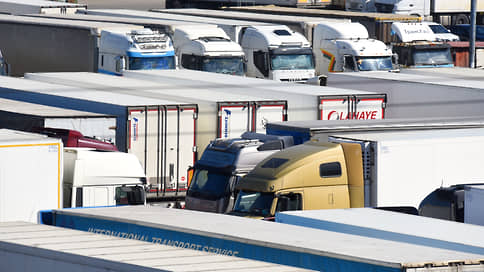Exports to EU countries fell to the volumes of imports to Russia
[ad_1]

The volume of Russian merchandise exports to the EU countries fell to levels comparable to the counter flow, which led to a sharp reduction in the EU trade deficit, according to Eurostat data. The share of Russian oil supplies in EU imports fell to 2%, gas – to 13%, coal – to zero, metals – by half, fertilizers – by a third. Under the embargo on the import of oil and oil products from the Russian Federation, total exports to the EU countries are approaching the volumes of supplies to Turkey, India and the EAEU, while supplies of European goods to Russia are more stable, but they are gradually being replaced by Chinese ones.
The volume of trade between the EU countries and Russia stabilized after the imposition of sanctions and the restructuring of flows – from February 2022 to June 2023, the share of deliveries from the Russian Federation in EU imports decreased from 9.6% to 1.7%, and Russia’s share in EU exports in the third countries — from 3.8% to 1.4%. Trade has almost balanced – its deficit on the European side has decreased from a peak of €18.5 billion in March 2022 to €400 million by June 2023 (and has not exceeded €1 billion for four months). Including the quarterly deficit in energy trade decreased from €40.4 billion in the second quarter of 2022 to €5.7 billion a year later.
Judging by the data of Eurostat, the volume of Russian deliveries to the EU declined sharply until March, then the decline slowed down. Compared to March 2022, by June 2023, the volume of imports to the EU countries from Russia decreased from €21.9 billion to €3.3 billion, primarily due to a sharp drop in energy supplies after the embargo on offshore oil supplies was introduced from 5 December (exports through the Druzhba pipeline remained) and for oil products from February 5. As a result, compared with the second quarter of 2021, the dependence of the EU on Russian oil supplies decreased by 27 percentage points – from 29.2% to 2.3% – due to supplies from Saudi Arabia (the share increased by 5%), Norway (plus 3 p.p.), to 11% of EU imports in both cases, the US share increased from 8% to 13%. In gas, the share of the Russian Federation decreased by 26 percentage points, from 38.5% to 12.9% (the share of the United States doubled to 24%, now it is the largest supplier, the shares of Algeria, Great Britain and Norway also increased). The share of the Russian Federation in the supply of coal to the EU fell most dramatically – from 45% to zero. In total, according to the EC, 49% of Russian exports and 58% of imports fell under sanctions (mainly technology and dual-use goods, as well as coal, and selectively – metallurgy and chemical products, fertilizers). The Russian share of the latter in EU imports decreased by 9 p.p. to 19% (deliveries from Egypt and Canada increased), nickel – by 14 p.p. (to 21%), iron and steel – from 17% to 8% (primarily for India). The dynamics of European exports to the Russian Federation was more stable (it decreased from €3.4 billion to €2.9 billion). The level of the second quarter of 2021 was exceeded only by the supply of cocoa and cocoa products to Russia (probably, we are talking about an increase in chocolate exports).
It should be noted that in terms of the total volume of supplies to the Russian Federation, the EU remained its second trading partner – deliveries for the first half of the year, judging by the data presented by the head of the Ministry of Economy Maxim Reshetnikov at a lecture at the VAVT, amounted to $18.6 billion against $23 billion in the first half of 2022. The volume of imports to the Russian Federation from China during this time increased from $28.7 billion to $42.6 billion, while the EAEU countries remained in third place, but supplies increased significantly – from $9 billion to $15 billion (at least in part, this trend is associated with re-export goods from third countries amid restrictions in logistics and settlements). There were no changes in the list of the ten largest suppliers to Russia during the year – all countries retained their places (the total volume of imports increased from $93 billion to $106 billion).
In the list of the largest buyers of Russian products, on the contrary, only Turkey and the EAEU retained their positions, the EU dropped to second place after China and the decline was significant – from $98.9 billion to $24.5 billion (supplies to China increased from $30 billion to $37, 3 billion). As a result, as an importer, the EU approached Turkey, the EAEU and India ($17.3 billion, $16.1 billion and $15.5 billion, respectively). The second top five now includes the Middle East, North Africa, South Korea, the CIS (without the EAEU) and the rest of Asia – earlier, India, the CIS (without the EAEU), Japan, the USA and the Middle East followed South Korea in fifth place.
[ad_2]
Source link






